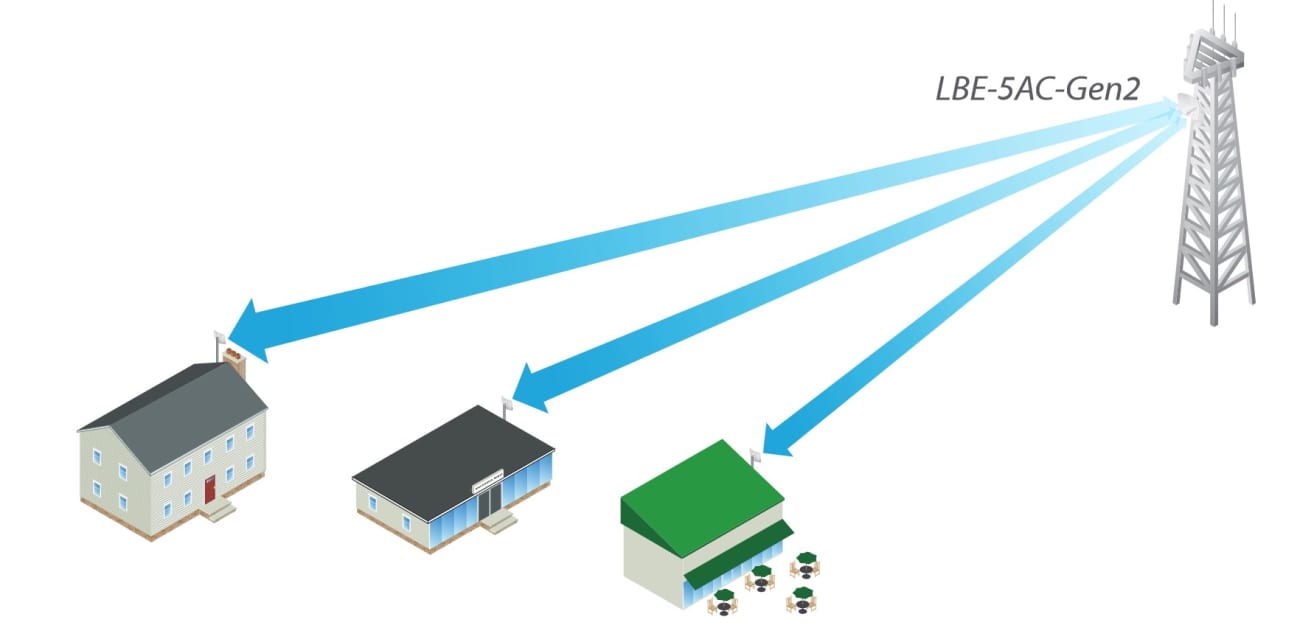
High Capacity Wireless Links
The ideal method for distributing broadband internet connectivity across great distances is wireless point-to-point and point-to-multipoint (PtMP) networks. Omnidirectional antennas are typically used by Wi-Fi networks and wireless access points to transmit signals over the surrounding region. Point-to-point and point-to-multipoint radios should be used instead in circumstances when the signal must travel over great distances. If there are no obstructions, it is possible to receive the signal over a kilometre away. This calls for a technical installation from experts who can guarantee you get the greatest signal possible.

What are PtP and PtMP Radios Used For?
PtP and PtMP radios transmit and receive data back and forth over a network from Site A to one or more sites. You can think of them as a wireless cable at its most basic level. They function as a transparent layer 2 wireless Ethernet bridge, which is a more true description. They transform wireless signals into Ethernet and Ethernet into wireless signals. Radios are primarily in charge of carrying traffic and ensuring that bits are reliably sent and received.

PTMP Networks
A PtMP network is more scalable than numerous separate PtP links when connecting multiple locations. A PtMP network encircles a portion of the area and enables many radios to link up to a central location. A PtMP network is made up of a PtMP base station AP, which links to numerous stations, as opposed to a single AP and a single station. There are many radios that can be utilised as APs or stations, but PtMP base station possibilities are more limited.
Base Station vs. AP vs. Station
It's also important to note the terminology used to describe PtP radios. Two radios, each capable of sending and receiving data, are needed for the PtP link. The functions of these two radios are distinct. Site B is the station, while Site A is the AP. The AP controls the wireless network's SSID, security settings, channel choice and width, among other things. The station joins the network created by the AP, and the AP establishes the rules. The station radios are often referred to as customer premises equipment, or CPE. A PtP network only has one station, whereas a PtMP network has numerous stations.
Industry Leading Equipment
SHC Group can provide, install and configure your home or business with a vast array of PtP and PtMP equipment from a large number of industry leading vendors.

Our Installation Services
We have had great success and feedback using equipment from various vendors to establish PtP or PtMP networks. Our team of professionals will hand pick the best equipment and suggest the best options to meet your needs.
Communications Updates
Latest Technology News
Sorry, we haven't published any News for this category yet. Please check back later for the latest updates.






